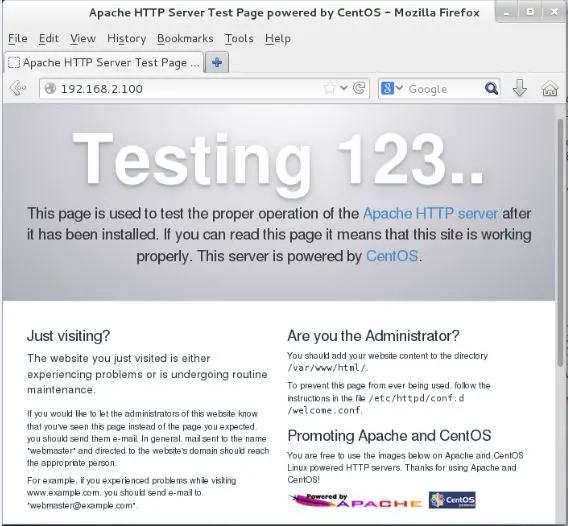Apache Default Install Directory Centos
Apache web server is probably the most used web server across platforms including different Linux distributions and Windows. The web server is used to deliver web content and can serve many queries at once. It is often the preferred choice by professionals for building different web projects. Having at least basic knowledge of this web server is vital for any young professional who wants to start a career as a Linux system administrator. In this short tutorial, you are going to learn how to modify the root directory for Apache web server. For the purpose of this tutorial, we will use Ubuntu/Debian and RHEL/CentOS/Fedora based installations of the web server. However the paths and directives are practically the same for other distributions as well, so you will be able to apply the learned in different OSes as well.
This article demonstrates how to install Apache and PHP on CentOS 6. CentOS 6 comes with Apache 2.2.3 and PHP 5.1.6, and you can install them by using the default. Where does Apache install httpd.conf by default? Vertebrate Life 9th Edition Pdf. I always install apache from yum on CentOS even on critical production servers. No such file or directory.
To make the necessary changes you need to modify the DocumentRoot directive of the web server. This is the directory from which Apache will read the contents that the visitor will access over browser. Or in other words, this is the directory that forms the tree of directories that will be accessible over web. The default DocumentRoot for Apache is: /var/www/html or /var/www/ These paths are described in the Apache’s configuration file. Ubuntu/Debian /etc/apache2/sites-enabled/000-default /etc/apache/apache2.conf CentOS/RHEL/Fedora /etc/httpd/conf/httpd.conf To change the document root for your Apache web server simply open the corresponding file with your favourite text editor and search for DocumentRoot.

# # DocumentRoot: The directory out of which you will serve your # documents. By default, all requests are taken from this directory, but # symbolic links and aliases may be used to point to other locations. # DocumentRoot '/var/www/html' After that change the path to the new target directory and make sure that Apache is able to read/write in that directory. Once you have modified the DocumentRoot, save the file and restart apache with: # systemctl restart apache [For SystemD] # service httpd restart [For SysVinit] Final thoughts The change of default document root is an easy task that can be completed in a couple of minutes. When making such changes is important to make sure that you do not make any typos and make sure to always restart Apache after making changes to its configuration file. Point 1 is pretty known stuff use netstat and some other commands, however it will not show all that is moved over the connection.

Some things could be hidden from netstan thing Point 2, and somebody bad could gain access to root sudo stuff, I had issues with that thing, and I have tracked them to some place in africa but after that I was not able to track them further, @ Marin Todorov I will try to use point 3, but chmod will not allow your file to be modified but when moved on Windows and then will be opened to well, not nice stuff.
This guide is written for a non-root user. Commands that require elevated privileges are prefixed with sudo. If you’re not familiar with the sudo command, you can check our guide. Before You Begin • Ensure that you have followed the and guides, and the Linode’s.